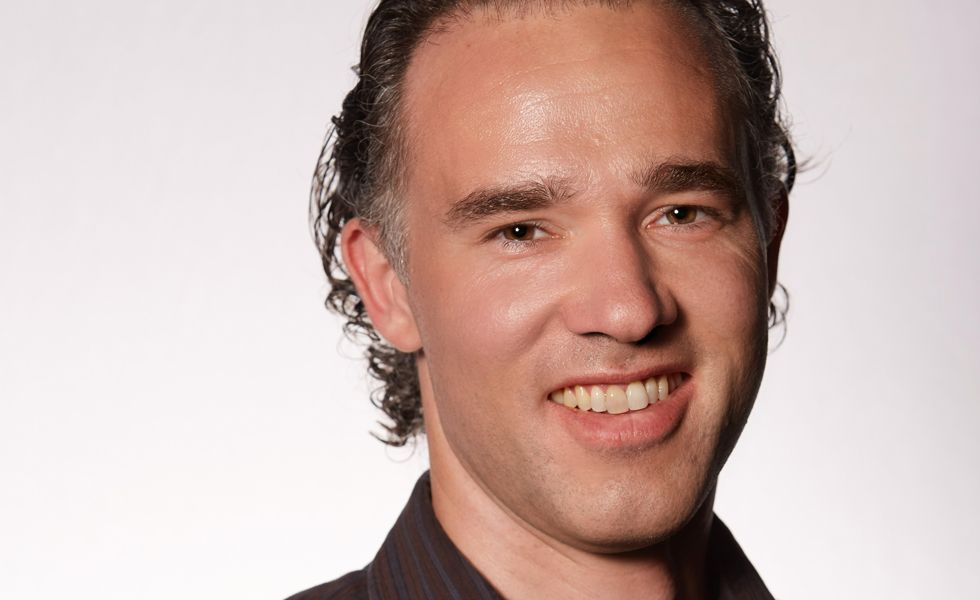
-
Careers • News • Contact us •
- Login
- Français
Events to come
May 24, 2022
From 11:30 AM to 12:30 PM
Conference
Ramón A. Piñol

Preoptic BRS3 neurons increase body temperature and heart rate via multiple pathways
Ramón A. Piñol Manchon, PhD
Staff Scientist
National Institute of Diabetes and Digestive and Kidney Diseases
National Institutes of Health
This conference is part of the the IRCM Early-Career Scientist Seminar Series (ECS3), a groundbreaking initiative whose mission is to showcase early career scientists. This is a great opportunity to discover the exciting projects of these researchers in training in front of a multidisciplinary audience.
Zoom Link: https://zoom.us/j/95269762104
ID: 952 6976 2104
Code: 476372
About the conference :
As endotherms, failure to use metabolic heat to maintain a stable internal temperature can lead to a myriad of physiological and psychological perturbations including death. Therefore, identifying the neural cell-types and circuits regulating body temperature is critical to our understanding of this motivational need state. The preoptic area (POA) is a key brain region for regulation of body temperature (Tb), dictating thermogenic, cardiovascular, and behavioral responses that control Tb. Previously characterized POA neuronal populations all reduced Tb when activated. Using mice, we now identify POA neurons expressing bombesin-like receptor 3 (POA-BRS3) as a population whose activation increased Tb; inversely, acute inhibition of these neurons reduced Tb. POA-BRS3 neurons that project to either the paraventricular nucleus of the hypothalamus or the dorsomedial hypothalamus increased Tb, heart rate, and blood pressure via the sympathetic nervous system. Long-term inactivation of POA-BRS3 neurons caused increased Tb variability, overshooting both increases and decreases in Tb set point, with RNA expression profiles suggesting multiple types of POA-BRS3 neurons. Thus, POA-BRS3 neuronal populations regulate Tb and heart rate, contribute to cold-defense, and fine-tune feedback control of Tb. These findings advance understanding of homeothermy, a defining feature of mammalian biology.
About Ramón A. Piñol :
Dr. Ramón A. Piñol graduated from George Washington University with a doctoral degree in Neuroscience, and then joined the lab of Dr. Marc Reitman at the National Institutes of Health to pursue a postdoctoral fellowship. Now a staff scientist, his research focuses on the neural circuits involved in energy metabolism and the cardiovascular system and has led to publications in top-level journals such as Cell Metabolism and Nature Neuroscience.
Please tell us about your career path, leading up to your application to the ECS3 program:
I studied Biomedical Sciences at the University of Amsterdam and obtained my Msc in Neurobiology there in 2006. I received my PhD from the George Washington University (Washington, DC) in 2013, studying neurotransmission to brain stem cardiac vagal neurons. I was the first to demonstrate direct functional hypothalamic neurotransmission to cardiac vagal neurons, using electrophysiology, optogenetics and calcium imaging. As a post-doc I aimed to expand my skillset with whole animal physiology using neural circuit manipulations (in vivo chemo- and optogenetics) to facilitate my broader vision and understanding of the autonomic nervous system. I joined the laboratory of Dr. Marc Reitman at the National Institutes of Health to functionally characterize neural circuitry of bombesin-like receptor 3 neurons. Bombesin-like receptor 3 is an orphan G protein-coupled receptor and is a critical regulator of whole-body energy metabolism and the cardiovascular system. Our first major paper on bombesin-like receptor 3 (published in 2018) showed differential roles in cardiovascular and energy metabolism regulation for bombesin-like receptor 3 neurons in the paraventricular and dorsomedial nucleus of the hypothalamus. In our next paper, published last year, we showed that a defined bombesin-like receptor 3 neuron population is the first documented population in the preoptic area (a brain body temperature hub) that can increase body temperature when activated. Since June 2021 I have been a staff scientist in the Reitman lab.
Please tell us about your passion for research. What motivates you most about your work?
During my time as a MSc student, I completed two 8 month lab rotations in labs that study hypothalamic integration of physiology and energy metabolism. This laid the foundation for my interest in discovering more about how the central nervous system regulates the body. While we may overlook this, ultimately, the brain functions for the body to survive.
I find motivation in the discovery of things about the brain and physiology. The process of designing experiments with the right controls to make your conclusion as strong and thorough as possible with the current techniques and methods available can be a beautiful and rewarding journey – that, despite the frustration of failing attempts and the general time-consuming nature of science.
Please tell us about your professional goals. What do you hope to accomplish as a scientist?
I aspire to become a leader in my field by elucidating the function and details of defined pathways regulating the autonomic nervous and neuroendocrine systems in health and disease, continuing to contribute to address critical questions within the network function of autonomic regulation of heart, vasculature, brown adipose tissue and energy metabolism. To further our understanding of these systems and build up the wiring diagram further, I want to address understudied but very important and unique aspects of central autonomic regulation. My goal is that this research leads to new important and clinically relevant insights to how diseases develop and can be targeted to ultimately mitigate highly prevalent diseases, including cardiovascular disease and obesity.

© Montreal Clinical Research Institute, Année.All rights reserves. | Privacy policy | Terms of use | Web site by Agence Riposte


